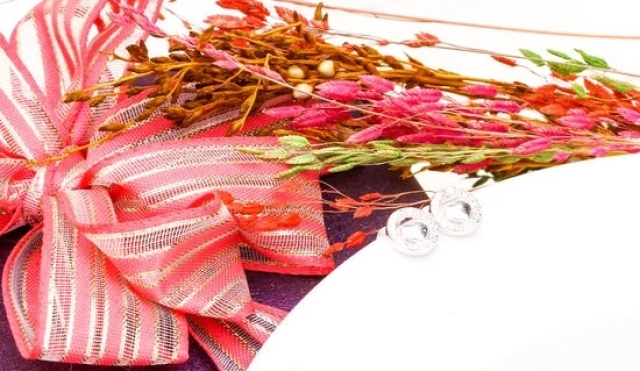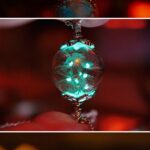Cleaning gold plate jewelry is an important part of keeping it looking its best. Gold plate jewelry is form of jewelry that has a base metal, such as silver or steel, and a thin layer of gold plated on top. The popularity of these pieces are attributed to the fact that they look like solid gold at an affordable cost.
Although, cleaning must be done regularly to ensure that the base metal beneath the top layer of gold does not corrode. Regularly cleaning your gold plate jewelry also preserves the look and shine of the piece; while inhibiting tarnish from forming due to prolonged exposure to air or other environmental elements.
How To Clean Gold Plate Jewelry Cleaning gold plate jewelry can be done using either home remedies or commercial products easily found in stores, though caution should be taken when using any cleaning agents on the piece. You’ll want to check with a professional jeweller if you have any doubts or questions about your particular piece given all jewelry require different levels of care depending on the materials used during its construction and manufacturing process.
When using home remedies such as warm water, mild soap, dish detergent, baking soda and lemon juice you should always clean by hand – never use automatic devices such as electric toothbrushes when trying to get into small crevices and cracks which can cause scratches if you’re not careful as well as damage the underlying metal beneath the topmost layer of gold plating.
A soft brush such as those used for cosmetics works best when scrubbing away dirt & debris from each crevice & crack without causing damage – finish by gently rinsing with lukewarm water & lay it out on paper towels until everything is dry before storing it away properly in its box/container.
For those wanting a more thorough clean than just what home remedies provide commercial cleaning solutions are available which come in both liquid formats and wipes made specifically for different types of metals that react similarly to other metals once they are exposed in contact with them over sustained periods of time (i.e., chemicals reacting differently when closely coupled together).
These cleaning solutions usually come along with instructions about usage but in general wiping down pre-treated surfaces with a slightly damp cloth followed by another through dry cloth should do the job when getting rid of dirt & stains restoring your jewellery’s original shine and sparkle.
Different Types of Gold Plate Jewelry
Gold plated jewelry can save you money compared to going out and buying solid gold. Gold plate is created when a quality base metal such as brass or copper is covered in an electroplating process with layers of pure gold. This creates an attractive piece of jewelry that looks like it has been made from solid gold without the expense.
Gold plate comes in different karat weights just like solid gold jewelry does, ranging from 8k all the way up to 24k. The higher the karat weight, the thicker the layer of gold applied to the base metal and the longer it will last without needing a recoat.
How to Care For Gold Plate Jewelry
It is important that if you own this type of jewelry you take special care when wearing and cleaning it. While cleaning gold plate can help maintain its brilliance, certain chemical solutions could cause damage to both the gold layers and the base metal underneath. Soaps should be avoided because they leave soap scum on top of your jewelry which makes it look duller over time and dulls a jewelry’s shine faster than anything else.
Instead, use warm water and mild detergent for weekly cleanings and treat more stubborn tarnish by lightly buffing with a soft cloth. Be sure not to scrub too hard as any excess force can remove part or all of your gold plating layer causing damage beyond repair.
Safely Store Gold Plated Jewelry
Gold plate is very vulnerable to oxidation due to contact with oxygen in air so it is best kept stored away in an airtight container when not being worn or while being traveled with such as for business or vacations spots since sudden environmental changes can also effect its integrity over time.
Additionally, keeping regularly worn pieces away from heavily chlorinated environments such as swimming pools can help avoid discoloration of the underlying base metal which would reduce its purity levels eventually leading to corrosion and degradation of your precious metals over time.
How Gold Plate Jewelry is Made
Gold plating is a process of placing a thin layer of gold onto another surface to give it the lustre and shine of solid gold. This is done by submerging the metal to be plated in an electrolyte solution with an electric current passing through it.
Gold atoms are then attracted to the negatively-charged pieces of jewelry, where they attach themselves to the surface and bond. The resulting layer of gold is much thinner than solid gold but still has many endearing qualities, including affordability.
Precautions Before Cleaning Gold Plate Jewelry
Before you begin cleaning gold plate jewelry, there are some important points to consider:
- Always ensure that your jewelry is free from any loose material such as dirt or dust before cleaning
- Do not use abrasive materials such as rubbing alcohol or nail polish remover as these will strip away the plating
- Use only light soaps or detergents specifically designed for use on jewelry
- Avoid using commercial jewelry cleaners as they may contain harsh chemicals that could damage your jewelry
- Remove all gems, stones, and other pieces that could fall off or get scratched during cleaning
Cleaning Glasses With a Cloth
Gold plated jewelry can be easily cleaned using a gentle cloth. Here’s how:
- Gently sprinkle a small amount of warm water over your clean piece of gold plate jewelery.
- Soak it for about five minutes in warm water mixed with a gentile detergent.
- Rinse in cool clear water and pat dry gently with a soft cloth.
Materials Needed to Clean Gold Plate Jewelry
Opting to clean gold plate jewelry is an excellent choice. Gold looks beautiful when clean, and staying on top of its maintenance can help it look brand new for years. To ensure that the process goes as smoothly as possible, it’s essential to have certain basic materials on hand.
- Soft cloth
- Soft brush
- Mild soap
- Warm water
Apart from these materials, it may be necessary to purchase specific jewelry cleaning solutions depending on the type of gold plating you wish to clean. For any non-standard liquids used in this process, always check the manufacturer’s guidelines first. Little mistakes like using improper types of laundry detergents or toothpaste could do more harm than good and cause damage beyond repair.
To begin with, use a soft cloth to wipe away any dirt or dust that has accumulated on the gold plated jewelry surface. Do not apply pressure while cleaning as this may cause scratches on the outer layer of the jewelry. Once all dirt is removed, take a bowl of warm soapy water and mix in mild soap – one tablespoon should suffice.
Soak the golden piece for no longer than 10 minutes in this solution and then remove it with a spoon or tongs, letting excess liquid drip off before placing onto a towel-lined surface. Taking a soft bristled brush, lightly scrub off any excess deposits present before rinsing with lukewarm water and drying with a soft cloth.
Finally, polish the item of jewelry to retain its original shine using special gold polishing cloths available at most stores – simply rubbing lightly over each side until everything is lustrous again should do the trick.
Step-by-Step Instructions for Cleaning Gold Plate Jewelry
- To clean gold-plated jewelry, start by mixing together warm water and mild dishwashing soap. Create enough suds to submerge your piece of jewelry.
- Soak the jewelry for a few minutes before lightly scrubbing it with a soft brush.
- Use the soft-bristled brush to lightly scrub the surface of the gold-plated jewelry with care. Pay closer attention to areas that are heavily soiled.
Afterward, rinse the piece off thoroughly in order to rid it of any soapy residue. After rinsing, pat the jewelry dry using a soft towel or tissue cloth.
In addition to using dish soap, an alternative cleaning option is lemon juice. This method involves adding two tablespoons of freshly squeezed lemon juice into a bowl along with 1/4 cup warm water and stirring them together until fully combined.
Once prepared, soak the gold-plated jewelry in the solution for five to ten minutes. Once finished soaking, take out the piece of jewelry and use a soft brush or toothbrush to scrub away any remaining dirt or grease on its surface. Rinse off the item thoroughly before drying it off with a towel or tissue cloth.
Tips and Tricks for Cleaning Gold Plate Jewelry
Using a Soft Brush to Get into Narrow Spaces
When it comes to cleaning gold plate jewelry, one of the most important things you can do is use a soft brush. Examples include an old toothbrush, or baby brush. These brushes can be used to get into narrow spaces in between or around stones and other crevices that need some attention.
It’s also a great way to start if your jewelry isn’t too dirty. Rather than putting it in an overnight soak, begin by brushing gently with the soft toothbrush. You should also dip the brush in water every now and then for lather, helping to rid your piece from light surface dirt and any sweat or oils that may have collected over time.
Soaking Overnight May be Necessary for Older Jewelry
In some cases, depending on how old the jewelry is or how caked-on dirt is, you may need to leave the gold plate piece in soapy water overnight. Add just enough warm water and dishwashing liquid soap OR baking soda solution (1 tablespoon baking soda per 1 cup of water) to fill the bowl partially with enough liquid for submerging your items and let them sit overnight – 8 hours should do the trick.
Again, this depends on how dirty they are; if they aren’t that bad then no more than a few hours will do. Before placing your jewelry in the bowl of liquid make sure you check all settings on the pieces as well as any stones around them making sure nothing is loose or ready to fall off with a good soak.
Polishing with a Cloth after Soaking
After removing your pieces from either their quick rinse OR an overnight soak, gently remove excess moisture with a soft cloth such as old T-shirt material because paper towels may be too abrasive if used dry. Then take another clean cloth and complete polishing until it shines again – you may also apply Jewelers Polish when necessary if you want it extra shiny.
When polishing don’t forget around those difficult areas near gemstones and tight spaces where dirt likes to hide – these areas require gentle but thorough cleaning in order for all dust particles to be removed before letting dry completely.
Avoiding Common Mistakes when Cleaning Gold Plate Jewelry
Gold Plate jewelry is a fashionable and easy way to give the appearance of wearing gold without the higher cost. Unfortunately, due to its delicate nature, cleaning gold plated jewelry can be tricky. There are several tips worth following in order to keep your gold plated jewelry in pristine condition and extend its lifespan.
- Never submerge your gold plated jewelry fully in liquid.
- Avoid swimming or showering with your gold plated jewelry on.
- Avoid using bleach or other harsh chemicals when cleaning.
Submerging any type of jewelry will cause it to lose its shine over time-the same goes for gold plate. When swimmers enter a pool, the chlorine may cause irreversible damage to gold plate items as well as sterling silver ones. This damage may appear cracked or crazed and will absorb dirt into the cracks if not adequately maintainedl. Therefore, swimmers should take off any jewelry before entering the pool.
Showering with your jewelry on may also affect its long-term luster if it is already worn down; moisture mixed with soap residue from body wash or shampoo may create a corrosion-like effect that will dull down any type of luster your jewelry previously possessed. To keep Gold Plate Jewelry looking its best, it is advised to remove all pieces while showering and washing hands too.
Wearing gloves can help prevent further damage from harsh chemicals when cleaning Gold Plate Jewelry as they can be abrasive against this type of metal. It is important to avoid dish soap or other household cleansers as they are usually too strong and strip away at essential natural oils that many people secrete onto their skin through normal wear and tear.
Mild cleaners such as those designed for specific metal types are recommended instead; these non-abrasive cleaners will not strip away protective oils and can help extend the lifespan of Gold Plating quickly and effectively.
Storage Tips for Gold Plate Jewelry
- Polishing cloths specifically created for gold-plated jewelry should be used to keep the gold-plating shining.
- Store your gold plated jewelry in a cool, dry place with fabric and paper dividers.
- Separate your gold plated jewelry from other pieces to avoid contact abrasion or scratching.
We all love to show off our beautiful gold plated jewelry. But over time, the luster can begin to fade and dull as a result of oxidation. In order to protect these items from oxidation, it is important that regular cleaning and maintenance is done.
Use Mild Detergents: As most gold plate jewelry pieces are delicate, mild detergents should always be used along with a soft brush when cleaning any dirt build up that has accumulated over time. When selecting a mild detergent, try to look for one that contains no abrasives or those that are recommended for use on metal surfaces.
Polishing Cloths:Using polishing cloths are effective cleaning techniques when it comes to reducing the buildup of dirt and other chemicals on the surface of the gold-plated jewelry item. Polishing cloths specifically created for gold-plated jewelry should be used to keep the gold-plating shining. Additionally, make sure not to use rough fabrics on your items as this could end up scratching or damaging the item beyond repair.
Storing Gold Plate Jewelry
- Gold plating is not resilient against harsh temperatures so best practice is store away from direct sunlight or heat sources such as radiators and stoves.
- Store your gold plated jewelry in individual containers lined with fabric after cleaning them thoroughly before storage.
- Place tissue paper between each piece of jewelry while storing. This prevents contact abrasion or scratching the pieces together.
Conclusion
Cleaning gold plate jewelry has many benefits and is important to do on a regular basis. Gold plating can become dull and faded over time due to dirt, oils or lotions that may have collected on the surface. Regular cleaning helps maintain the beauty of the jewelry and can preserve its sparkle for longer. Additionally, gold plating can be easier to restore back to its original condition than some other types of finishings like sterling silver or oxidized metals.
When it comes to cleaning gold plated jewelry, there are a variety of methods that work well depending on the particular piece and how much buildup needs to be removed. The most effective ways include steam cleaning, using a soapy water solution or using specific commercial cleaning fluids designed specifically for glass products.
Items such as chains should be laid flat while they are being cleaned with solutions to avoid knots and tangles in the metal links. A soft brush can then be used to agitate areas that are more resistant to cleaning solutions.
The final step in regular maintenance is remembering to rinse off any remaining residue afterward with plain water and buffing with a dry cloth which will help bring back its vibrant and shiny appearance.
Benefits of routinely cleaning gold plate jewelry includes restoring luster and shine while also protecting one’s investment from damage or fading caused by daily wear – as these pieces make less contact with dirt, sweat and oils they will naturally last longer over time while looking better too.

Welcome to my jewelry blog! My name is Sarah and I am the owner of this blog.
I love making jewelry and sharing my creations with others.
So whether you’re someone who loves wearing jewelry yourself or simply enjoys learning about it, be sure to check out my blog for insightful posts on everything related to this exciting topic!





